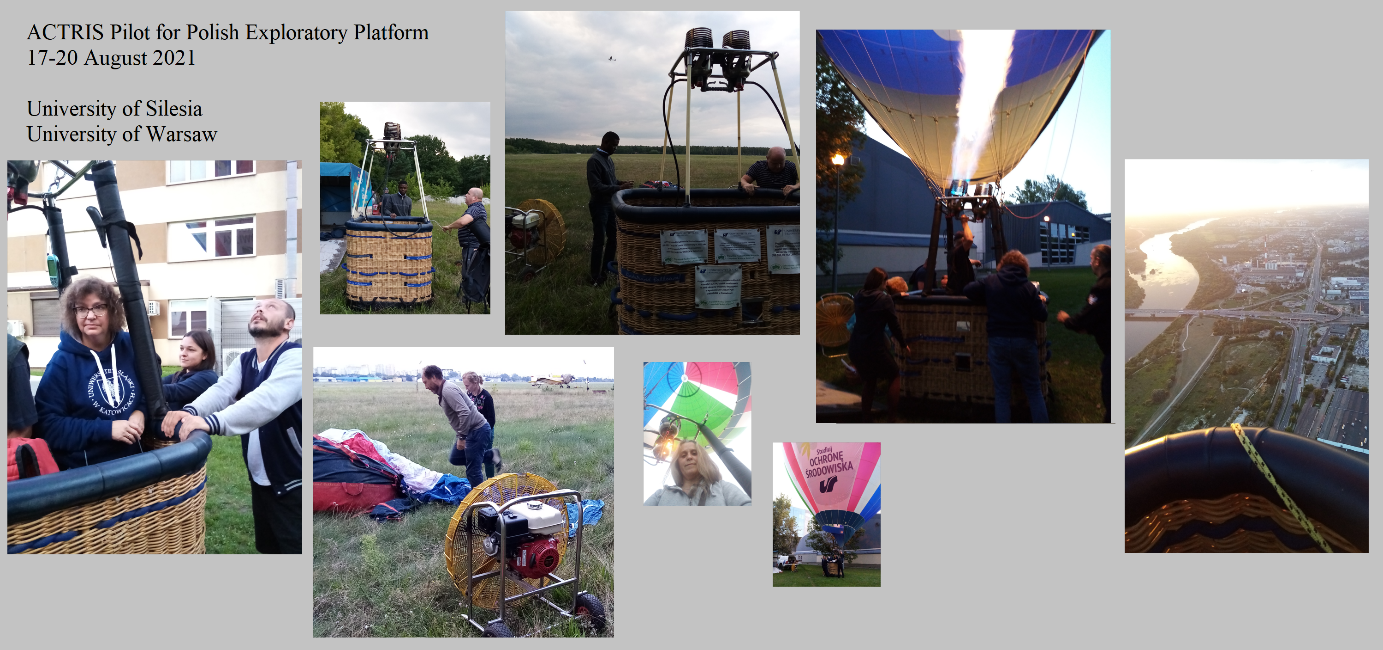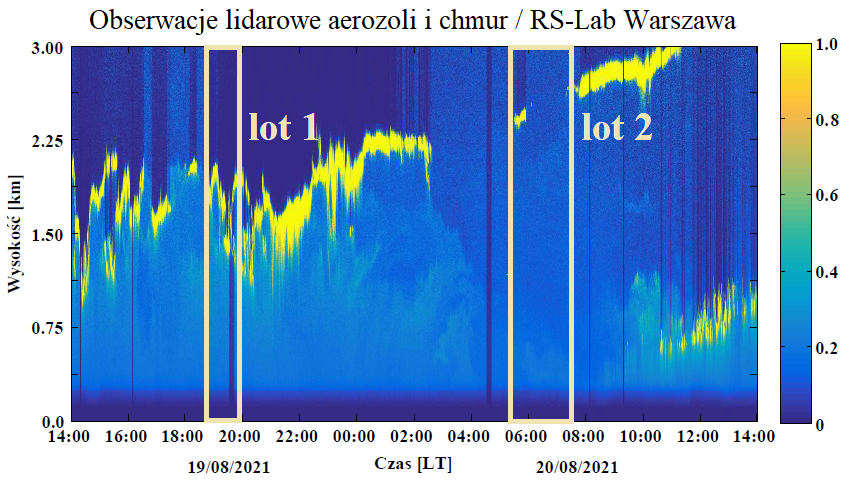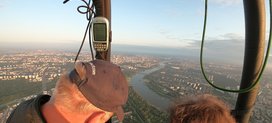
ACTRIS Pilot for Polish Exploratory Platform
On 17-21 August 2021, within the framework of the Pan-European Research Infrastructure for Aerosols, Clouds and Trace Gases (ACTRIS) from the Roadmap of the European Strategy Forum for Research Infrastructures (ESFRI), the ACTRIS-Poland Pilot Measurement Campaign was conducted in Warsaw, coordinated on behalf of the Faculty of Physics, University of Warsaw (UW) by dr hab. Iwona Stachlewska, prof. ucz. and of the University of Silesia in Katowice (UŚ) by dr hab. Mariola Jabłońska, prof. ucz.
Research teams of two mobile laboratories from the University Laboratory of Atmospheric Control (ULKA UŚ) and the Remote Sensing Laboratory (RS-Lab UW) were simultaneously carrying out ground and balloon measurements of the troposphere over Warsaw. Ground-based atmospheric profiling was performed remotely using, among others, a Raman-polarization lidar, a solar photometer and a microwave radiometer at the EARLINET/AERONET/CLOUDNET Station at RS-Lab UW, located next to the building and on the roof of the Faculty of Physics of the University of Warsaw. In-situ profiling of air quality was performed from the Overhead Mobile Laboratory (NML ULKA UŚ), equipped with measuring apparatus placed in the basket of a hot air balloon. The following measurements were made: concentration of dust particles in the range from 0.3 to 10 μm, the content of nanoparticles, soot, the concentration of gases: NO, NO2, NH3, SO2, CO2, benzene, formaldehyde, ozone, total volatile organic compounds. PM10 dust samples were taken for phase composition analyses. The whole system was supplemented by records of meteorological parameters, including temperature, pressure and relative humidity.
The balloon measurements took place on 19-20 August 2021. The first balloon launch took place on Thursday at approx. 19:00 from the Warsaw-Babice Airport. The flight lasted about 60 minutes. The balloon with the pilot and the research team (Mirosław Szczyrba and Ewa Teper from Silesian University and Iwona Stachlewska from the University of Warsaw) and the measuring equipment rose to an altitude of about 1 km. The landing took place near Targówek/Choszczówka. On Friday morning, the second research team (Mariola Jabłońska, Marcin Libera and Katarzyna Bednarczyk from the University of Silesia) took off from the Ochota Campus of the University of Warsaw at approx. 5:30 a.m. This time the measurements lasted slightly longer and the flight itself lasted approx. 90 minutes and the landing took place near Sulejówek.
Apart from the people mentioned above, the team was completed by Dominika Szczepanik, Emeka Ugboma and Wojciech Kumala from RS-Lab UW. A research car was used to transport the measuring instruments of the UŚ. The second car with a trailer was used to transport the balloon itself together with the equipment (cylinders, shell, basket) and navigation devices. The UŚ research apparatus, used for both aerial and ground (non-flight) measurements, included the following instruments:
- DV3000 gas analyser (ozone, benzene, formaldehyde, sulphur dioxide, ammonia, nitrogen dioxide, nitrogen oxide);
- Optical Particle Sizer Model 3330 for particle counting of PM 0.3 - PM 10;
- Particle Count/Mass Monitor PC-4000 Series for recording the concentration of total volatile organic compounds (approx. 40 types);
- Ozone analyser PO3M adjusted to work under different conditions of pressure and temperature, up to 10 km altitude;
- AE51 microaethalometer (soot analyser);
- PartectorTEM with integrated copper mesh for counting and collecting nanoparticles smaller than 300nm;
- SENYA high-flow aspirator, with a flow rate of approx. 125m3 air/ 1h;
- meteorological station.


Originally published on - Aug. 23, 2021, 11:15 a.m.
Last update on - Aug. 23, 2021, 1:51 p.m.
Publisher - Sekretariat IGF

